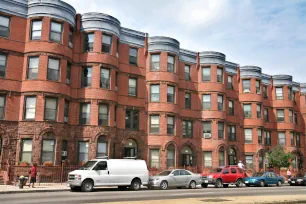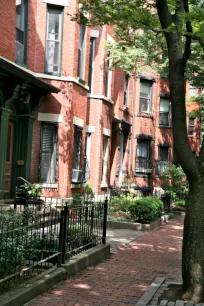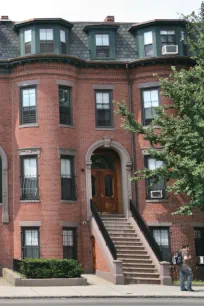The largest Victorian brick row house district in the United States, Boston’s South End sits on the National Register of Historic Places. Today, the South End is home to colorful people, fine restaurants, a thriving arts community, and dozens of pretty open spaces.
History

Located minutes from the vibrant downtown area of Boston, the South End was originally a narrow isthmus of land connecting the town of Boston to the mainland. It wasn’t until 1801 that the need for more living space arose and plans were laid out for the South End area.
The population grew so much in the 1840s that the city was pressed to fill in the Back Bay and South Bay marshes on each side of the isthmus. Soon, the mercantile class began flocking to the area, building magnificent townhouses that earned them the accolades of the architectural community. Many of the original homes were Italianate in style, but it wasn’t unusual to also find houses constructed in other styles as well, including Gothic Revival, Greek Revival, and French Second Empire.


In the 1860s, tree-lined Columbus Avenue was constructed in the style of a Parisian Boulevard and the design of the South End shifted from British – with its London-style squares – to French urban.
Before too long, however, the South End began to decline. By the turn of the twentieth century, it was strewn with tenement housing, being a favorite neighborhood for new immigrants. Later a black middle-class neighborhood arose, boasting some of the best jazz clubs in and around the city.
The 1960s and 70s and a rise in crime, however, brought decline to the South End, and it soon became one of the poorest and least desirable neighborhoods in Boston.
The Revitalization of South End
In the late 1960s, a historical society was formed in hopes of saving the neighborhood known as South End. Revitalization projects were begun to ensure the preservation of the architectural qualities of the area and many of those wonderful nineteenth-century homes and buildings are still standing, thanks to the South End Historical Society.
Today, South End is one of Boston’s hippest areas and is home to a thriving Bohemian/Gay community that has provided guests with a reason to visit this colorful neighborhood. Visitors of all ages can enjoy some of Boston’s best restaurants here, as well as plentiful art galleries and dozens of parks and playgrounds. Ethnically, the area is still quite diverse, making it even more fun to explore.
- Next: Back Bay Fens
- More Sights & Attractions in Boston

